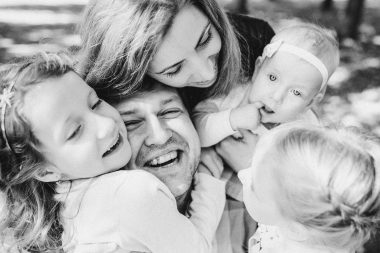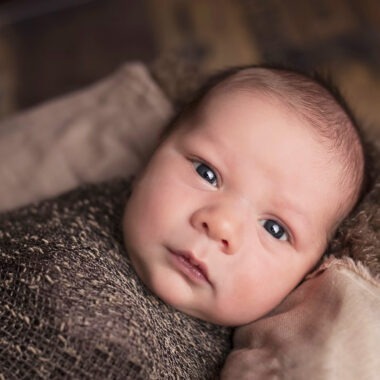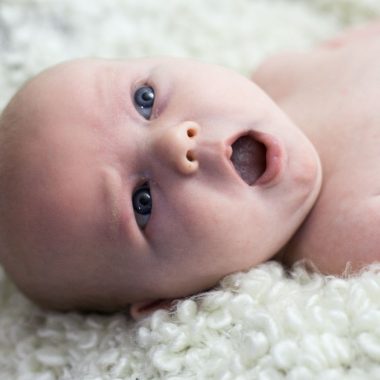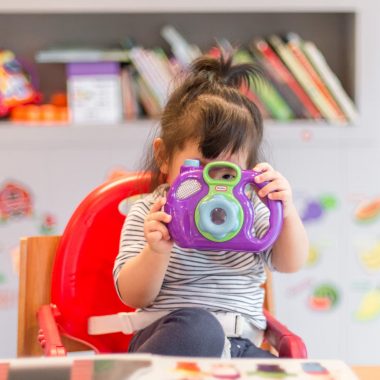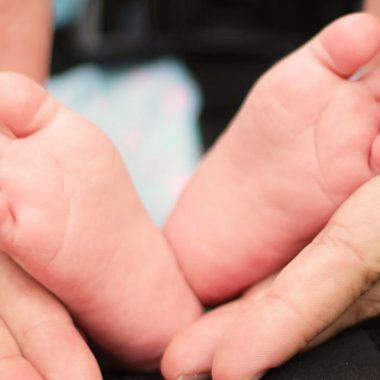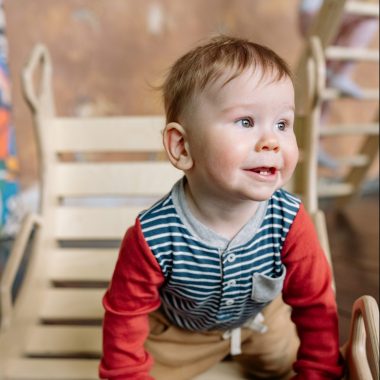Acquiring motor skills is an important part of your baby’s development.
Motor skills allow children to engage in physical activities and achieve age-appropriate developmental milestones. They help a child move and complete tasks efficiently. Motor skill development also supports cognitive, speech, and sensory development.
Gross motor skills are necessary for everyday activities like walking, jumping, balancing, kicking, running, and climbing. Developing these skills lets the baby and the child perform everyday tasks like sitting at the table, playing in the park, and throwing a ball.
In the first year of life, a baby achieves lots of milestones and many of them involve gross motor skills. In this article, you will read everything you need to know about gross motor skills.
What are gross motor skills?
Gross motor skills are those skills that require whole body movements and involve the large (core stabilizing) muscles of the body to perform everyday functions like standing and walking, running and jumping, and sitting upright at the table.
“Gross,” in this case, means “large,” and “motor” means “movement.”
These skills also include eye-hand coordination skills such as throwing, catching and hitting a ball as well as riding a bike, a scooter and swimming.
Gross motor skills require proper coordination and the function of:
- Skeletal muscles (the strength and power behind the movements).
- Bones (the structures that your muscles attach to).
- Nerves (the “messengers” of your brain that tell your muscles when and how to move).
Why are gross motor skills so important?
Gross motor skills (sometimes called large motor skills) development is very important because it enables a child to perform everyday tasks.
Practising gross motor skills helps children learn how to control and coordinate their body movements.
- Gross motor skills are those used to move the arms, legs, and torso in a functional manner.
- They involve whole-body movements. This is why they’re necessary for other abilities like balance, coordination, body awareness, physical strength and reaction time.
- Walking, running, playground skills (e.g. climbing), sporting skills (e.g. catching, throwing a ball) are all gross motor skills.
- Gross motor skills affect well being and give children the opportunity to socialize in play.
- Confidence and coordination in gross motor skills are essential for children in developing their fine motor skills.
What are some examples of gross motor skills?
Examples of everyday movements that are classified as gross motor skills include:
- Standing
- Walking
- Running
- Sitting upright without a back support
- Chewing
- Jumping
- Twisting your torso
- Bending over
- Moving/twisting your neck
- Raising your arms and hands
- Waving your arm
Examples of hand-eye and foot-eye coordination skills that are also gross motor skills include:
- Throwing and catching a ball
- Kicking a ball
- Doing a cartwheel
- Skipping
- Swimming
- Riding a bike or skateboard
- Rollerblading or ice skating
What is the difference between fine and gross motor skills?
Gross motor skills and fine motor skills may appear similar because they both involve using muscles and motor planning but they are controlled by different parts of the brain.
- Gross motor skills involve the large muscles of the body, such as the torso, legs and arms.
- Fine motor skills are at the opposite end of the spectrum and involve the smaller muscles of the hands and fingers. Your baby practices fine motor skills by grabbing and perfecting the pincer grasp. Eventually they use them to feed and dress themselves.
How do gross motor skills develop?
The first gross movements happen while your baby is in the uterus. The fetus kicks and moves their arms and most people tend to feel these kicks and punches around 19 weeks of pregnancy.
Gross motor skills continue to develop rapidly after birth as both involuntary reflexes and purposeful movements.
Purposeful movements tend to develop from the head down. Babies typically learn to first lift their heads while on their bellies. Then they learn to push up with their arms. Next, they usually learn to crawl using their arms and legs and eventually walk.
Each gross motor skill that your baby practices and then masters will help them build on the next one as they grow.
But you should always remember that every child is unique. Your child may not follow the typical timelines and that is still perfectly normal because every child develops in sync with their own internal clock.
It’s very important to note that physical development doesn’t always follow a straight line, so you shouldn’t compare your kid with other kids their age.
On the other hand there are certain gross motor skills that children usually practise at particular ages. These can include:
By 0-6 months
Your baby,
- Begins to push themselves up while on their tummy.
- Starts making deliberate movements with arms and legs.
- Holds their head upright.
- Bears weight on their legs when feet are flat on the floor.
- Brings their feet to their mouth when lying down.
- Pushes up from tummy to elbows.
- Sits without support.
- Rocks on hands and knees.
- Rolls over.
- Moves objects from one hand to the other.
By 6-12 months
Your baby,
- Sits up on their own.
- Reaches for items while in a seated position.
- Moves their body into different positions (like lying and sitting).
- Crawls on their tummy.
- Creeps and then crawls on their hands and knees.
- Pulls themselves up to stand.
- Stands alone for a few seconds.
- Walks with support and possibly takes a few steps without support.
By 1 year
Your baby,
- Squats to pick something up.
- Walks alone.
- Carries items while walking.
- Crawls and then walks upstairs—usually with the assistance of hands or rails.
- Crawls downstairs on their belly, leading with the feet.
- Runs, although 1-year-olds usually fall easily.
- Sits on small objects by themselves.
- Climbs onto bigger objects and then turns to sit down.
By 2 year old
Your child,
- Walks and runs with reasonable ease.
- Stops and starts easily while moving.
- Ascends and descends stairs independently.
- Jumps in place with their feet together.
- Kicks a ball with either foot.
- Learns to throw with their arms.
- Stands on tiptoes.
By 3 year old
Your child,
- Maintains balance on one foot for a short time.
- Walks backwards and sideways.
- Jumps forward for a small distance.
- Rides a tricycle.
- Catches a large ball (usually with stiff arms).
- Stands on one leg for a short period of time.
By 4 year old
Your child,
- Goes up and down the stairs normally.
- Demonstrates good running, jumping, and climbing skills.
- Hops on one foot.
- Catches a ball with their arms.
- Climbs ladders and playground equipment.
- Moves on tiptoes.
- Navigates around obstacles.
By 5 year old
Your child,
- Skips on alternate feet and gallops.
- Jumps rope.
- Walks along a narrow path.
- Rides a bicycle.
- Swims, dances and skates.
- Plays ball games.
What if your child has gross motor skill delays or difficulties?
You should always keep in mind that every child is unique and development never really follows a straight trajectory.
Below are some things that you may want to look out for during the development of your child:
- Your child isn’t interested in the physical activities that their peers are happy with doing. In fact, they even try to wiggle out of them.
- Your child fails tasks on purpose to mask that they’re having a hard time doing them.
- Your child tells other kids how catch a ball or do any other thing but they don’t take part in the game.
When should you contact your doctor about gross motor skill concerns?
Gross motor skills are important for major body movement such as walking, maintaining balance, coordination, and reaching.
These abilities have connections with other physical functions which are important for play, sports, and fitness. They are also connected to other actions necessary for daily life and academic success.
Delays in gross motor skills can lead to some problems including fine motor abilities. For example a child’s ability to maintain upper body support will affect their ability to write.
Gross motor development may have an impact on a child’s cognitive and motor abilities as they grow older. And early intervention is very important.
If you’re worried your child isn’t reaching gross motor skill milestones, talk to their pediatrician. They’ll ask questions about your concerns and can perform tests.
If your child has a decline in gross motor skills, talk to your healthcare provider as soon as possible, especially if the decline is sudden.
What causes gross motor developmental delays?
Some children reach gross motor milestones later than others, and there is no known cause or long-term issue. And this is generally considered to be normal.
If a gross motor delay is related to a medical issue, however, it typically involves the following:
- Premature birth that results in muscles developing more slowly.
- Genetic causes (such as Down syndrome).
- Nerve and muscle disorders (such as muscular dystrophy or cerebral palsy).
- Developmental diagnoses such as autism.
- Hormonal causes such as hypothyroidism.
Activities to encourage gross motor skills in your child
As their muscles get stronger and their brains continue to develop, the fine-tuning and number of gross motor skills of your child grow.
Gross motor skills continue to develop throughout childhood and adolescence. They get more complex with the passage of time.
Babies and children learn a lot of gross motor skills by interacting with their environment. But there are also ways to help your child practice gross motor skills at different stages of development.
Babies
- Head position practice: Alternate the side that you position your baby’s head when you lay them down. Choose left one day and right the next day. This will encourage your baby to lift their head and to strengthen both sides of their neck.
- Tummy time: Tummy time strengthens your baby’s neck and back muscles.
- Rattle tug: It’s never too early to start building those biceps. Put a rattle in your baby’s hand and tug gently.
- Sitting your baby up: Prop your baby up to encourage them to develop the motor skills to sit independently. As they’re learning, offer a hand to keep them stable.
- Sticky notes on the wall: Once your baby can pull themselves up to a wobbly stand, try putting post-It notes on the wall just out of their sitting reach. They’ll delight in pulling themselves up to grab the notes and pull them off the wall.
- Free movement: Once you create a safe space for your baby, spending less time with them in bouncers and jumpers and more time encouraging them to move on their own is incredible. Don’t forget to scatter their favorite toys around.
Toddlers
- Going for walks: Allow your toddler lots of time to walk around when at the park. Baby proof your home and let your child walk around.
- Sand play: Sand play is magical. As your child digs, scoops, pours, and sifts, they’re working on their gross motor skills.
- Create obstacle courses: Put safe objects around the room so that your toddler needs to duck, crawl, sidestep, reach, pull themselves up and even move items to get from one side to the other.
Preschoolers
Gross motor skills are mostly developed early and, as noted above, involve just the large muscle groups. Once your child has picked up on those skills, they can add other layers of skill like coordination, muscle development, posture, balance, and more.
Some examples of building upon their gross motor skills include:
- Hopscotch and skipping
- Trampoline jumping
- Swimming
- Playing musical instruments
References: webmd.com, verywellfamily.com, parents.com, understood.org, canr.msu.edu, healthline.com, oxfordhealth.nhs.uk, whattoexpect.com, sciencedirect.com, pathways.org, clevelandclinic.org



